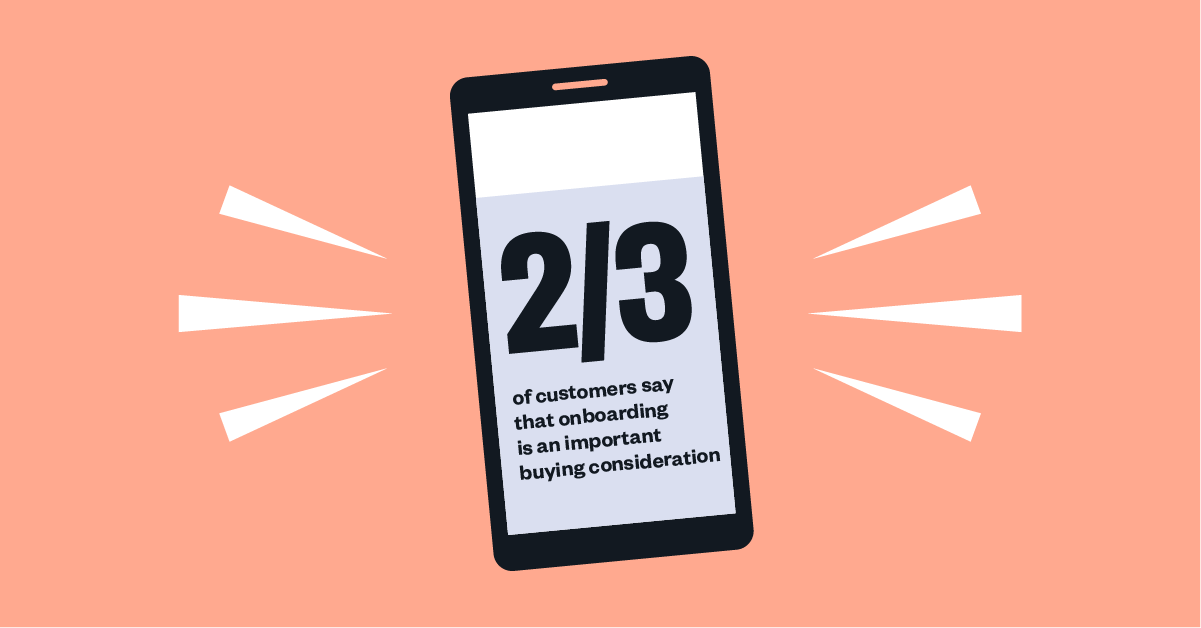Elevating Client Onboarding to Make an Impactful First Impression
Marketing and sales alignment is a hot topic. And while we agree on its importance, at Sullivan we think there’s another cross-functional area that’s often overlooked. We believe that marketing and operations alignment—particularly during the customer onboarding experience—represents a significant source for business growth.
Why onboarding?
It’s not a novel idea that a better customer experience can help drive business growth. But for many organizations, tackling all the places customer experience comes to life can feel like boiling the ocean. So how do you prioritize? By focusing on the first significant moment: customer onboarding.
At most organizations, once a sale is made both marketing and sales quickly move on—getting back to filling the funnel and fueling conversions. But we think it’s worth dwelling on that post-sale moment just a bit longer. Onboarding is the first step to entrenching the customer in your products and making your relationship sticky. It’s an opportunity to course-correct bad client habits so they get more out of your offering. And it’s even the first touchpoint on your journey to up-selling and cross-selling.
The stats back this up. Two-thirds of customers say that onboarding is an important buying consideration (source). Plus the cost of acquiring a new customer can also be four or more times higher than retaining an existing one (source), so it’s critical to hold onto the customers you have converted. In fact, companies that invest in better customer experiences (including onboarding) can see a 32% increase in cross-sell and upsell (source).

Let the communicators communicate
Unfortunately, onboarding is often a long, confusing and disjointed process that involves collecting hundreds of datapoints and documents—delaying revenue, creating a poor customer experience, and negatively impacting brand perception. But as marketers, we have a trove of skills, data, and perspectives at our disposal that put us in a position to help transform onboarding experiences for customers.
From legal to operations and implementation—many teams are involved in this unavoidably complicated onboarding process. These teams may not prioritize customer-first communication, because that’s not their mandate or how they’re incentivized—which can create a lack of transparency that is frustrating for customers.
This is where marketers, the expert communicators, can make a real difference. Because with marketing involved in this process, other teams can improve their communications and onboarding can become a great first impression, instead of a moment for drop-off.
For example, when we reimagined the onboarding experience for a specific Crown Castle customer segment, our first recommendation was to re-write the customer communications throughout the onboarding process, which was filled with niche acronyms, jargon, and internal-facing information that wasn’t relevant to the customer. Internal onboarding teams often don’t consider this, because their day-to-day job is about executing the process—not communicating it.
Marketers have strong client insights and data
Marketing is often the most customer-focused team in a company. With insights from customer segmentation and persona research, marketers have the most in-depth knowledge of who the customer is and what they care most about—which is essential to effectively engaging and communicating with them. Maybe one customer wants a white-glove, high-touch experience based on their mindset, but another wants more autonomy to experiment—marketers are the ones who will have researched those mindsets in each customer segment and have actionable data on their preferences and interests. And data shows customers expect this—86% of B2B customers expect companies to be well-informed about them during any service interaction.
Because marketing understands the customer’s mindset and gathers data throughout the marketing and sales funnel, they can help create relevant and effective communications that give customers the right information, at the right moments—to make onboarding feel valuable and seamless.
When onboarding messaging begins before the sale, it helps the sale
Including messaging that speaks to the onboarding process within the sales and marketing funnel has multiple benefits. It allows you to showcase your expertise and knowledge of the process, it helps customers become confident in the product, and it supports the processes around the product—making customers more likely to convert. And because plenty of customers come with unrealistic expectations about the process and the time and/or resources required, educating them on what to expect can also limit potentially negative onboarding experiences.
Many companies are already doing this to some extent—they just call it content marketing. The same content that positions you as an expert often also makes for a more prepared customer once onboarding begins. And when marketing is involved in the creation of all content from high-level onboarding messaging to detailed process materials—it helps reinforce a consistent brand voice and experience that makes customer relationships stickier.

Getting the most value out of a first impression
Onboarding is one of the most important experiences for both the customer, and your business. A positive onboarding experience helps with brand perception, customer retention, and can even power growth through greater adoption after onboarding is complete. As B2B marketers, we’re constantly being challenged to prove our worth, and tie the essential work we do to the bottom line as much as possible. This has meant pushing for more integration with sales, and we think it also means making the case to work alongside operations.
It’s time to stop treating onboarding as a back-office operational problem and start seeing it as a marketing opportunity to transform this essential part of the customer experience.


